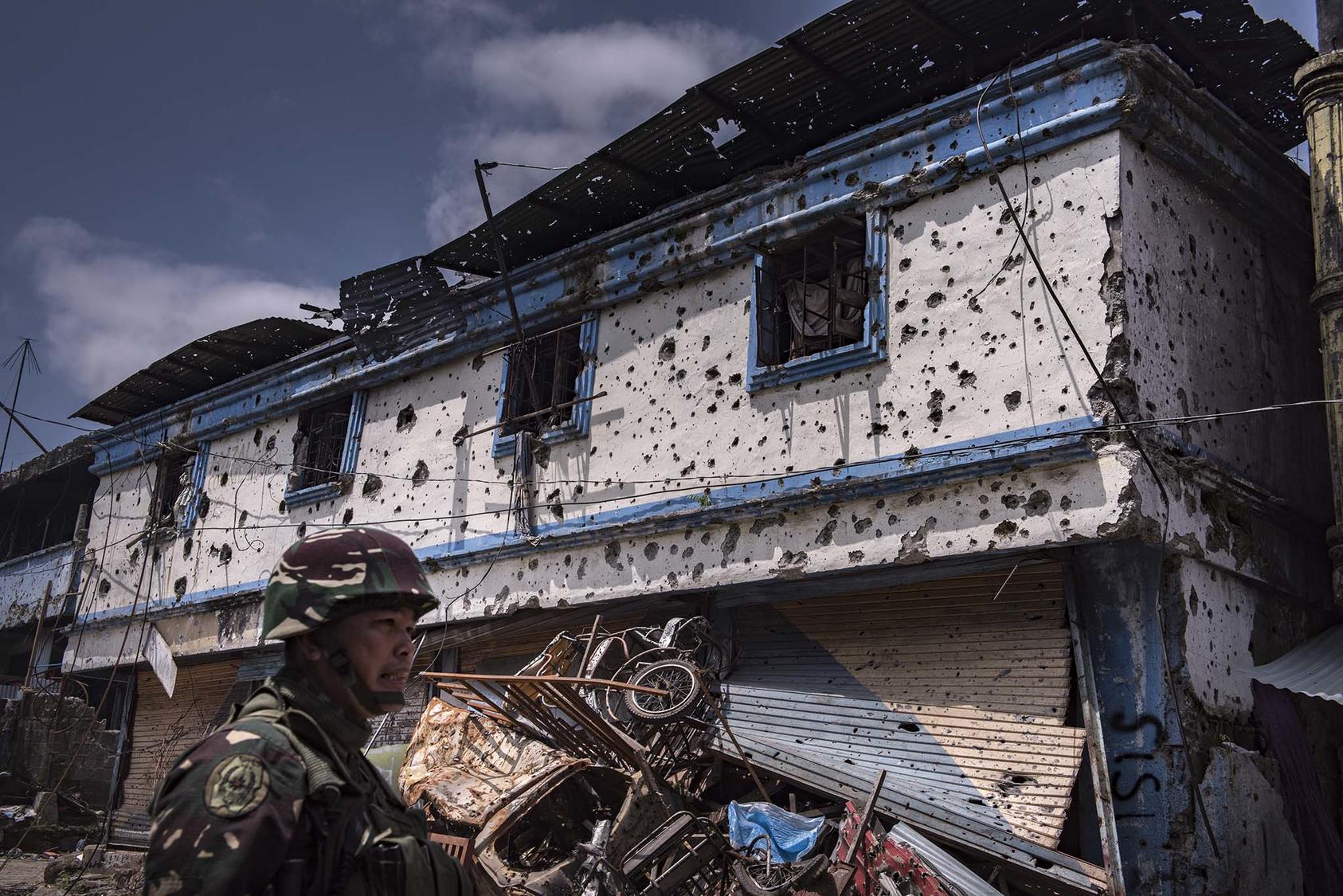2020 Trends in Terrorism: From ISIS Fragmentation to Lone-Actor Attacks
The Global Terrorism Index points to the need for better data and local insights to inform policy to counter extremism.
In the past five years, terrorist attacks have declined notably around the globe. While this is certainly good news—particularly in the 20th year of the so-called global war on terror—terrorism remains a pervasive threat. Despite declines in its prevalence, the scale of the challenge posed by terrorism and the violent ideologies that underpin it is still immense and the mechanisms by which to address it remain complex and in need of further coordination on a global scale. What trends did we see in 2020? And how can those trends inform policy to counter violent extremism?

In November 2020, the Institute of Economics and Peace released their annual Global Terrorism Index (GTI), an invaluable resource for understanding the current impact of terrorism around the world. On a subject that provokes much speculation and conjecture, the GTI provides hard empirical data illuminating the actual scale and impact of terrorism worldwide with important implications for identifying ongoing and future terrorism trends, tolls, and threats. The GTI data highlights two key patterns of particular note for informing more proactive and effective policy: the decline and displacement of the Islamic State group in the Middle East and the rise of far-right violence in the West.
Trend 1: Islamic State Fragmentation
GTI data indicates the continued decline of the Islamic State’s core in Syria and Iraq. In fact, 2019 marked the first year since 2013 with less than 1,000 deaths from ISIS acts of terror. The decline of ISIS’s core, however, has been coupled with the rise and expansion of ISIL provinces and affiliates around the world—now stretching across Europe, Russia, Eurasia, Asia, and Africa. As the GTI report highlights, the central trend has been the displacement of activity away from the Middle East and North Africa, with a global presence becoming an increasing part of the Islamic State’s operations. In 2019, Islamic State provinces and affiliates accounted for 74 percent of all the deaths from the group’s acts of terrorism. In particular, the African continent has become a focus of affiliates’ growth and increasing activity, with sub-Saharan Africa by itself now accounting for 41 percent of deaths.
This apparent displacement to Islamic State’s affiliates raises many questions for future threats the group poses. Already we are seeing the growing influence of the Islamic State in conflict and insurgency operations in countries like Mozambique, where the group is purported to be providing fighters and resources in support of a continued local Islamic insurgency. While the extent to which any one location or conflict will or can potentially serve as a site for which the Islamic State is able to re-group and re-launch is questionable, its continued impact and influence even after its territorial defeat should not be underestimated, nor should the staying power of the brand it created.
Perhaps the most important question is whether one of ISIS’s affiliates emerges to eclipse its core. There is precedence for such a dynamic. As al-Qaida central was weakened by counterterrorism operations, its affiliate in Yemen, al-Qaida in the Arabian Peninsula (AQAP), would eventually rise to eclipse it. This was largely due to its willingness to plan and execute attacks in the West, and with the aid of the infamous ideologue Anwar al Awlaki developing effective Islamist propaganda that played a major part in fueling the jihadist cause in the West. Will any of the ISIS’s provinces develop along this trajectory, or will they remain focused on their local conflicts? A key consideration for policymakers moving forward, therefore, is not what comes after the Islamic State, but rather, how will its global fragmentation impact and potentially further its operations in the coming years.
Governments around the globe need to be careful not to become complacent. While ISIS-core has experienced significant decline in capability and loss of territory, it is not defeated. To a certain extent we have been here before, back in 2007 following the “Anbar Awakening” in Iraq. And we have seen how the Islamic State in Iraq, as it was then called, was able to rebuild itself and reach even greater heights. The Islamic State’s strategy is based on a staged approach—not dissimilar from the Maoist strategy of protracted warfare—and after their defeat in the Anbar Awakening they simply returned to a lower stage, went underground and re-grouped in the countryside. They expect to oscillate between stages before eventual victory. It is important to remember that it is this strategy that is arguably its primary export to global affiliates. If we are not careful and vigilant, the Islamic State is more than capable of re-emerging and rising in strength once again.
Trend 2: Rise of the Far Right in the West
The second trend of note in the GTI has been the rise of the far right in the West. While the threat from the Islamic State remains in the West, the last few years have seen a dramatic increase in the threat presented by the far right. As the data in the GTI highlights, there has been a 250 percent increase in far-right terrorist incidents since 2014. In Western countries, far-right extremism now accounts for 46 percent of attacks and 82 percent of deaths from terrorist attacks.
One of the key features of far-right terrorism, highlighted in the report, is that the majority of attacks are carried out by lone actors who are not affiliated with a specific terrorist group or far-right organization—although the continued rise of far-right extremist groups nevertheless remains a pressing security concern. Lone-actor attacks, itself a contested concept, present their own unique challenges to counterterrorism. While these actors are often connected tangentially to or inspired by a broader ideological grouping or movement, the lack of a centralized command and control structure and clear affiliation with an organization means that traditional counterterrorism approaches—from group infiltration and/or membership identification to interception of communications—are not always possible, further complicating efforts to prevent attacks before they occur.
Still, the unaffiliated nature of many far-right perpetrators highlights the diffuse nature of the threat and the difficulties in defining it. In contrast to the Islamic State, which carried with it an easy to identify brand and a global consensus on the threat presented, the far-right—which has become increasingly intertwined with mainstream right-wing politics and rhetoric in many countries—is harder to define. As a result, it is increasingly difficult to reach consensus on the nature of the threat. This is particularly evident when looking at the challenge of tackling far-right extremism online— exactly where should we draw the line on which material warrants removal on the grounds of promoting or inciting violent extremism is a much more complicated discussion than it was when confronting Islamic State propaganda?
Perhaps the most worrying point made by the report was that the rise in far-right terrorism is part of a broader rise in political violence (including violent demonstrations and riots) in the West. This rise in political violence doesn’t happen in a vacuum but is rather symptomatic of wider trends. As the report notes, increasing political polarization and indications of the increased acceptability of political violence across the political spectrum in the United States present a foreboding picture of the future. Unless these trends are addressed, and efforts to remedy the social and political cleavages that have fueled their rise, they could lay the foundations for a further increase in political violence around the globe, particularly if coupled with the continued politicization and mainstreaming of far-right extremist views.
While the number of terrorist attacks worldwide has decreased in recent years, worrying trends associated with the fragmentation of ISIS and the global swell of far-right terrorism and political violence suggest that, when it comes to terrorism, it is important to maintain strategic-policy focus. To effectively deal with the ongoing threat posed by terrorism, regardless of its ideological leaning, policymakers must be armed with better data and also local insights, a role that the RESOLVE Network aims to fill, to inform their policy responses. While the political, social, and economic pressures may be great, concerted and ongoing efforts to address terrorism trends based on empirical data and local experience are nothing short of essential in 2021 and beyond if we are to continue this five-year downward trend in terrorism worldwide.




